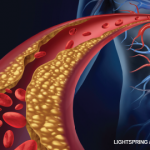 Increased cardiovascular (CV) risk in patients with rheumatic disease is old news. Over the past decade, a multitude of studies have demonstrated elevated CV risk in a variety of conditions: systemic lupus erythematosus, rheumatoid arthritis and psoriatic arthritis (PsA), to name a few. The risk in patients with rheumatic disease seems to be linked to unbridled systemic inflammation and accelerated atherosclerosis. The trouble is, now that we know about it, what is our responsibility as rheumatologists? Cardiology is its own specialty for a reason, isn’t it?
Increased cardiovascular (CV) risk in patients with rheumatic disease is old news. Over the past decade, a multitude of studies have demonstrated elevated CV risk in a variety of conditions: systemic lupus erythematosus, rheumatoid arthritis and psoriatic arthritis (PsA), to name a few. The risk in patients with rheumatic disease seems to be linked to unbridled systemic inflammation and accelerated atherosclerosis. The trouble is, now that we know about it, what is our responsibility as rheumatologists? Cardiology is its own specialty for a reason, isn’t it?
This article focuses on the elevated CV risk in PsA and discusses practical ways in which we can practice rheumatology, but also protect our patients from preventable CV harm.
The Evidence
Inflammatory arthritis is associated with an increased risk of CV disease. Many studies have described an increased risk of CV events associated with gout and rheumatoid arthritis, but the risk with psoriatic arthritis was not as well reported until recently.
In the early 2000s, researchers identified psoriasis as an independent risk factor for myocardial infarction even after adjusting for other CV risk factors (e.g., age, sex, tobacco use).1 It is now clear that PsA patients are at increased risk of CV disease as well.
A 2017 systematic review and meta-analysis of observational studies in patients with PsA showed a 43% increased risk of having or developing CV disease, and a 55% increased risk of incident CV events in patients with PsA compared with the general population.2 The increased CV risk was observed across a variety of types of CV events: myocardial infarction, cerebrovascular diseases and heart failure.
Does Treating to Target Lower CV Risk?
As rheumatologists, we hope treating to target will have protective CV effects in patients with PsA, but confirmatory data are not yet available. It is scientifically sound to theorize that controlling systemic inflammation will have protective CV benefits, and this is an area of active research in both cardiology and rheumatology communities.

Dr. Shapiro
I recall being excited and stunned by the 2017 New England Journal of Medicine trial investigating the use of canakinumab, an anti-interleukin (IL) 1β antagonist, in decreasing CV risk in patients with atherosclerotic disease.3 Over 10,000 patients with previous myocardial infarction and an elevated high-sensitivity C-reactive protein level were administered canakinumab every three months, with the primary efficacy end point being nonfatal myocardial infarction, nonfatal stroke or CV death.
Canakinumab in a dose of 150 mg every three months led to significantly lower rates of recurrent CV events than placebo, independent of lipid-level lowering. Although administration of canakinumab on a wide scale seems impractical given the cost, the trial did serve as proof of concept. More recently, colchicine, a far less expensive anti-inflammatory medication, has been shown to significantly reduce nonfatal CV events in patients with coronary artery disease.4-6
To date, studies investigating the protective CV effects of immunosuppressive therapies in rheumatology patient populations are observational only, but encouraging. For patients with rheumatoid arthritis, methotrexate and tumor necrosis factor-α (TNF-α) inhibitors may be of benefit. Effects are less clear in patients with psoriatic arthritis.7
Lihi Eder, MD, PhD, associate professor of medicine at the University of Toronto and co-director of the University of Toronto Cardio-Rheumatology Network, Ontario, Canada, notes that early observational studies may also suggest a protective effect of IL-17 and IL-23 inhibitors.
 On the other hand, in February 2021, the U.S. Food & Drug Administration (FDA) alerted the public that tofacitinib, a Janus kinase ( JAK) inhibitor, may increase the risk of “serious heart-related issues” compared with TNF-α inhibitors, according to preliminary results from a safety clinical trial.8 On Sept. 1, the FDA announced that it is requiring revisions to the Boxed Warning for tofacitinib and other JAK inhibitors to include information about the risks of serious heart-related events, cancer, blood clots and death.
On the other hand, in February 2021, the U.S. Food & Drug Administration (FDA) alerted the public that tofacitinib, a Janus kinase ( JAK) inhibitor, may increase the risk of “serious heart-related issues” compared with TNF-α inhibitors, according to preliminary results from a safety clinical trial.8 On Sept. 1, the FDA announced that it is requiring revisions to the Boxed Warning for tofacitinib and other JAK inhibitors to include information about the risks of serious heart-related events, cancer, blood clots and death.
Dr. Eder adds a caveat, saying that although more data are needed to definitively understand this risk, this information reminds us that not all mechanisms of action will be cardioprotective.
Our Role
Updated clinical practice guidelines regarding the management of patients with PsA from EULAR and the Group for Research and Assessment of Psoriasis and Psoriatic Arthritis (GRAPPA) stress the importance of CV risk monitoring in patients with PsA.9,10 But what exactly are the role and responsibility of the practicing rheumatology health professional here?
I know what you’re thinking … because I’m thinking it too. In a fee-for-service healthcare landscape, in which we are pressured to see more patients in less time, these thoughts are magnified. Expecting the rheumatologist to assess PsA disease activity, fine-tune complicated medication regimens, monitor for drug toxicity and listen empathetically—all in the span of 15 to 20 minutes—is already a lofty ask. To further expect us to assess and manage CV risk in the same amount of time feels untenable. But as I frequently remark to patients in clinic, “Heart disease will getcha a lot quicker than your arthritis will.” So where can we meet in the middle?
One novel solution is to do just that: meet in the middle. As co-director of the University of Toronto Cardio-Rheumatology Network, Dr. Eder collaborates directly with cardiologists in a combined cardio-rheumatology clinic. All patients with inflammatory disease are referred to the clinic at the time of diagnosis primarily in order to screen, stratify risk and intervene when necessary. As a team, the providers “try to find novel ways of identifying clinical or subclinical CV disease using tools such as coronary artery calcium scores and carotid ultrasound to identify high risk individuals. Then, [they] treat early and aggressively to prevent these events,” Dr. Eder says.

Dr. Eder
Dr. Eder acknowledges that working in an academic center with a clinic like this is a “bit of a luxury,” and “most rheumatologists don’t have access to these resources.” She hopes more cardio-rheumatology clinics will emerge in the future.
But for the time being, who should screen for CV risk factors, and how should we do it?
Should we refer all patients with inflammatory disease to cardiology? Should the primary care doctor be responsible? Or should the burden fall primarily on us, as we are most aware of the increased CV risk? Dr. Eder admits she doesn’t have the answers to these questions, but identifies four practical ways rheumatologists can make a difference:
- Consider basic screening tests, and encourage healthy habits. Dr. Eder remarks, “Many of our patients rely on us as their primary care physicians. So just screening—checking blood pressure, cholesterol and blood sugar once a year; talking about smoking cessation and a healthy diet—can help.”
- Communicate abnormal findings to the primary care provider. Because most rheumatologists may not have the time nor the comfort level to address and manage CV risk factors when identified, Dr. Eder suggests rheumatologists communicate directly with a provider who could take the reins to better protect patients.
- Educate primary care providers and cardiologists. Dr. Eder notes that, as rheumatologists, we are aware of elevated CV risk, but our colleagues outside rheumatology—even cardiologists—are not frequently aware of this risk, especially in younger patients. Including an educational, templated phrase in our clinical notes about increased CV risk in this population is a quick and handy way to accomplish this.
- Educate and empower our patients. Lastly, Dr. Eder points out that many of our patients are not aware of their increased CV risk. Educating them can empower patients to serve as their own advocates, increasing the chances of proper preventive care.
Summary
Psoriatic arthritis (and most inflammatory rheumatic diseases) increases the risk of cardiovascular disease. Early identification and treatment of risk factors can positively impact patient health.
What can we as rheumatologists do about it? We can check blood pressure and consider adding a lipid panel and a hemoglobin A1c to routine blood work once a year. If values are abnormal, we can notify relevant providers so they may be addressed. We can encourage smoking cessation and promote maintenance of a healthy weight. We can support active lifestyles and dispel the common myth that exercise will accelerate joint damage and disease. And in the good-and-evil world of electronic medical records, we can create a templated phrase to drop into clinic notes to educate colleagues, as well as patients, of the need for extra vigilance.
Samantha C. Shapiro, MD, is an academic rheumatologist and an affiliate faculty member of the Dell Medical School at the University of Texas at Austin. She received her training in internal medicine and rheumatology at Johns Hopkins University, Baltimore. She is also a member of the ACR Insurance Subcommittee.
References
- Gelfand JM, Neimann AL, Shin DB, et al. Risk of myocardial infarction in patients with psoriasis. JAMA. 2006 Oct;296(14):1735–1741.
- Polachek A, Touma Z, Anderson M, et al. Risk of cardiovascular morbidity in patients with psoriatic arthritis: A meta-analysis of observational studies. Arthritis Care Res (Hoboken). 2017 Jan; 69(1):67–74.
- Ridker PM, Everett BM, Thuren T, et al. Antiinflammatory therapy with canakinumab for atherosclerotic disease. N Engl J Med. 2017 Sep;377(12):1119–1131.
- Nidorf SM, Fiolet ATL, Mosterd A, et al. Colchicine in patients with chronic coronary disease. N Engl J Med. 2020 Nov;383(19):1838–1847.
- Tardif J-C, Kouz S, Waters DD, et al. Efficacy and safety of lowdose colchicine after myocardial infarction. N Engl J Med. 2019 Dec 26;381(26):2497–2505.
- Bouabdallaoui N, Tardif J-C, Waters DD, et al. Time-to-treatment initiation of colchicine and cardiovascular outcomes after myocardial infarction in the Colchicine Cardiovascular Outcomes Trial (COLCOT). Eur Heart J. 2020 Nov 7;41(42):4092–4099.
- Roubille C, Richer V, Starnino T, et al. The effects of tumour necrosis factor inhibitors, methotrexate, nonsteroidal anti-inflammatory drugs and
corticosteroids on cardiovascular events in rheumatoid arthritis, psoriasis and psoriatic arthritis: A systematic review and meta-analysis. Ann Rheum Dis. 2015 Mar;74(3):480–489.
- Initial safety trial results find increased risk of serious heart-related problems and cancer with arthritis and ulcerative colitis medicine Xeljanz,
Xeljanz XR (tofacitinib). U.S. Food & Drug Administration. Drug Safety Communication. 2021 Feb 4. https://tinyurl.com/52yr7ry6.
- Gossec L, Baraliakos X, Kerschbaumer A, et al. EULAR recommendations for the management of psoriatic arthritis with pharmacological therapies:
2019 update. Ann Rheum Dis. 2020 Jun;79(6):S700–S712.
- Coates LC, Kavanaugh A, Mease PJ, et al. Group for Research and Assessment of Psoriasis and Psoriatic Arthritis 2015 Treatment Recommendations for Psoriatic Arthritis. Arthritis Rheumatol. 2016 May;68 (5):1060–1071.
Patient Resources
- Women’s College Hospital, Cardio-Rheumatology Clinic website: https://www.womenscollegehospital.ca/careprograms/cardio-rheumatology-clinic
- Arthritis Foundation: https://www.arthritis.org/health-wellness/about-arthritis/related-conditions/other-diseases/arthritisand-heart-disease



